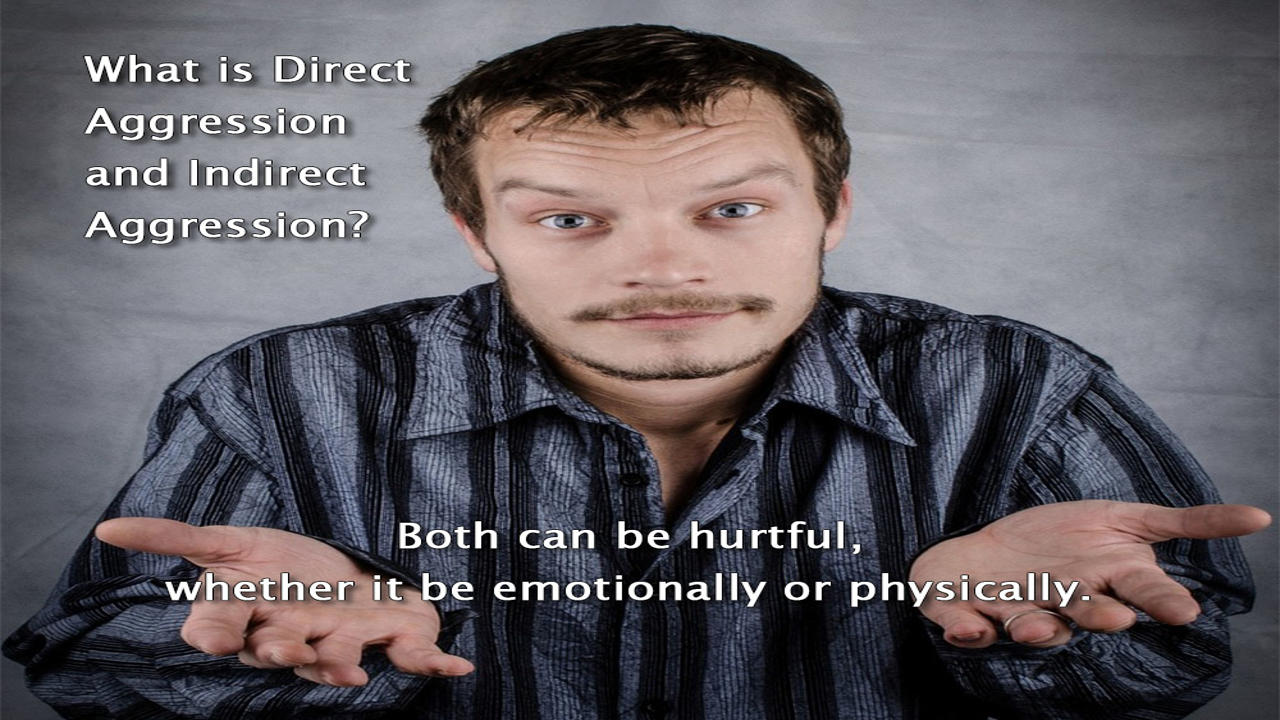Conflict is an inevitable part of life.
As much as we may want to avoid it, there are moments when we either witness aggressive behavior towards others, or we are the ones having the aggression directed at ourselves.
It’s also possible that we become the aggressor in particular circumstances.
Our lack of control over other people, and how they think, act, or react toward us, makes aggressive communication a common event in our lives. Aggression is any deliberate intent to cause harm, inflict pain or cause fear in another person.
Whichever form it comes in, whether it is physical aggression or verbal aggression towards another, it is done with malicious intent to dominate the other person and intimidate them in the process.
When expressed verbally, such as with shouting or yelling, it is a form of verbal abuse. Aggressive communication causes a person to suffer insults, experience shame, and go through a stressful situation that may affect them emotionally or psychologically.
If aggression is expressed through a person’s actions, it can either be done directly or indirectly.
Direct Aggression
Direct aggression is a form of aggression expressed through any physical contact. It is an act that is overtly directed at a person to cause them harm through any possible means.
Direct aggressive behavior can come in the form of any physical attack, such as punching, slapping, pulling someone’s hair or body part, or physically hitting them with objects to cause a direct assault.
Typically, crimes such as armed robbery fall under direct aggression. It can escalate further into grave acts of violence and cause criminal offenses that can injure or even kill a person.
These situations will naturally cause people to be extremely afraid for their life, as their life is in the hands of another, who is filled with rage. Therefore, direct aggression is expressing one’s rage and anger through violent actions.
A person can feel anger at any given moment but still choose not to act on it. Aggression is a choice, and it is no excuse to act violently even if under the influence of drugs or alcohol.
Indirect Aggression
Indirect aggression is a form of aggressive behavior that may not involve any physical acts or direct assault. It is taking action in a more roundabout way with the intent to be intimidating or still inflict some sort of harm.
Actions such as gossiping with the intent to create distrust about a person, and socially excluding someone from a group to make them feel insecure are clear demonstrations of indirect aggression.
You can easily see this sort of aggression in teenagers. This indirect aggression is also known as relational aggression or social aggression. It is considered to be a form of social manipulation geared at exposing the vulnerability of a person.
Indirect aggression covertly brings harm to another person within a social or relational setting and can cause severe emotional hurt and anguish.
The most common indirect forms of aggression include the following.
- Spreading rumors or belittling them to other people.
- Trying to break a person’s confidence.
- Calling someone a nasty name.
- Staring at them coldly and with hostility.
- Looking a person up and down with the intent to intimidate them.
- Excluding someone socially to make them feel awkward and unwanted.
Other forms border on harassment. These actions include the following.
- Posting nasty messages on social media or sending nasty emails to attack their self-confidence.
- Spreading gossip or posting messages in places to deliberately destroy a person’s reputation.
Bullying a person using many different methods, such as hiding their belongings, making prank calls, or bullying in front of others. This form of aggression can escalate when other people become involved in the harassment. This can also often be seen in teenagers, and the targeted individual suffers mercilessly at their hands.
In Summary
Indirect aggression can be very distressing and traumatic for those who experience it. Being exposed to this type of victimization has led some people to become severely depressed and worse, suicidal.
This type of aggression can be just as damaging and hurtful as physical aggression. Nobody deserves to be on the receiving end of vicious, inconsiderate, and damaging acts, whether they are exhibited directly or indirectly.
Inflicting harm, pain, and injury toward another person is an undesirable behavior that needs to be addressed.
Always remember, your actions and emotions are your choices. Make them good ones.
Special Offer!
You Will Find This Course In You Earth Plus
Coming Soon
Is Aggressive Behavior Affecting Your Life
– At Home, Work, or Online?
Understanding the different communication styles can help you protect yourself – physically and emotionally.

Whether your communication style is passive, aggressive, or passive-aggressive, this eBook can help you become more confidently assertive.
An assertive communication style will help you communicate with other people more honestly and effectively, and increase your safety.
Aggression can be any behavior that aims to dominate others.
It can be physical or verbal aggression, which is a form of communication that’s characterized by strong, provocative emotions and a lack of empathy.
- Have you ever experienced being insulted by someone?
- Has someone put you down by talking harshly to you?
- Have you ever heard gossip about yourself or had someone spread rumors about you?
If you have experienced any or all of the above issues, then you have had to deal with someone’s aggressive behavior.
Bullying is another form of aggression that can lead to unfortunate effects on the bullied individual.
Not all aggression is active aggression, either!
Passive aggressiveness is a very common behavior, wherein the aggressor covertly and even dishonestly communicates hostility.
To be on the receiving end of passive-aggressive behavior is definitely not a pleasant experience.
‘Aggression’ will help you understand the major communication styles. You will learn their causes and why people act as they do.
Better yet, you will learn how you can become more assertive, and being assertive is the healthiest and most positive communication style you can have.
You will learn –
- The negative effects of aggression – this goes far beyond the physical dangers.
- The signs of an aggressive communication style – warning signs to watch out for.
- Signs of passive-aggressive behavior. This is very common and the source of much unhappiness in relationships, both at work and at home.
- Causes of passive-aggressive behavior, and how to overcome it if this is you.
- How to deal with passive-aggressive behavior in your partner. This might save your relationship.
- How to become a more assertive communicator, whether you are currently aggressive, passive-aggressive, or passive!
- And much, much more!



